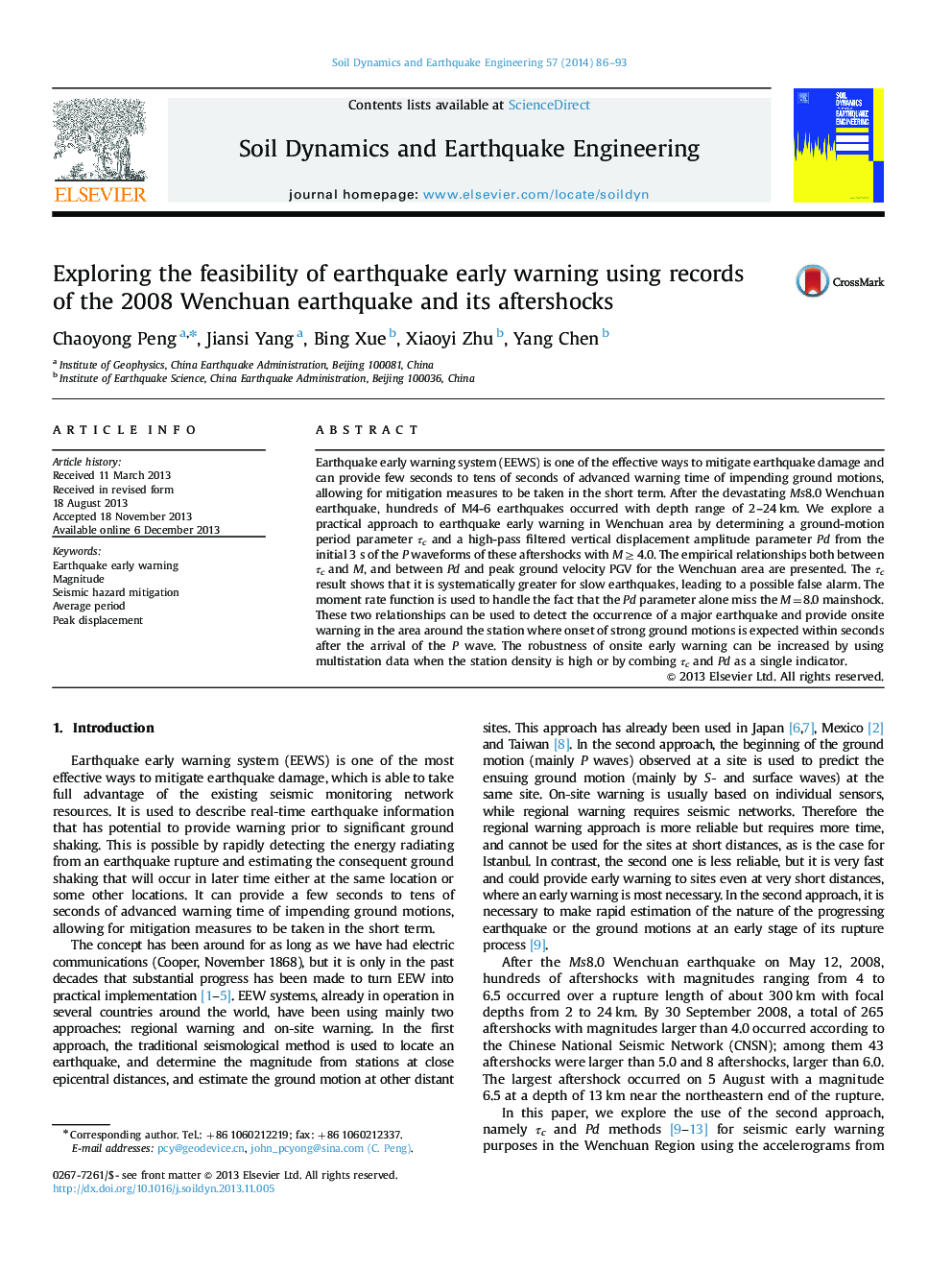| Article ID | Journal | Published Year | Pages | File Type |
|---|---|---|---|---|
| 304214 | Soil Dynamics and Earthquake Engineering | 2014 | 8 Pages |
●Strong-motion records of the Wenchuan mainshock and its aftershocks are used.●Empirical correlations between τc and M, and between Pd and PGV are developed.●Slow earthquakes yield large τc and may lead to false alarms.●Robustness of onsite early warning can be increased by using multistation data.●τc and Pd are combined as a single indicator to improve the reliability.
Earthquake early warning system (EEWS) is one of the effective ways to mitigate earthquake damage and can provide few seconds to tens of seconds of advanced warning time of impending ground motions, allowing for mitigation measures to be taken in the short term. After the devastating Ms8.0 Wenchuan earthquake, hundreds of M4-6 earthquakes occurred with depth range of 2–24 km. We explore a practical approach to earthquake early warning in Wenchuan area by determining a ground-motion period parameter τc and a high-pass filtered vertical displacement amplitude parameter Pd from the initial 3 s of the P waveforms of these aftershocks with M≥4.0. The empirical relationships both between τc and M, and between Pd and peak ground velocity PGV for the Wenchuan area are presented. The τc result shows that it is systematically greater for slow earthquakes, leading to a possible false alarm. The moment rate function is used to handle the fact that the Pd parameter alone miss the M=8.0 mainshock. These two relationships can be used to detect the occurrence of a major earthquake and provide onsite warning in the area around the station where onset of strong ground motions is expected within seconds after the arrival of the P wave. The robustness of onsite early warning can be increased by using multistation data when the station density is high or by combing τc and Pd as a single indicator.
